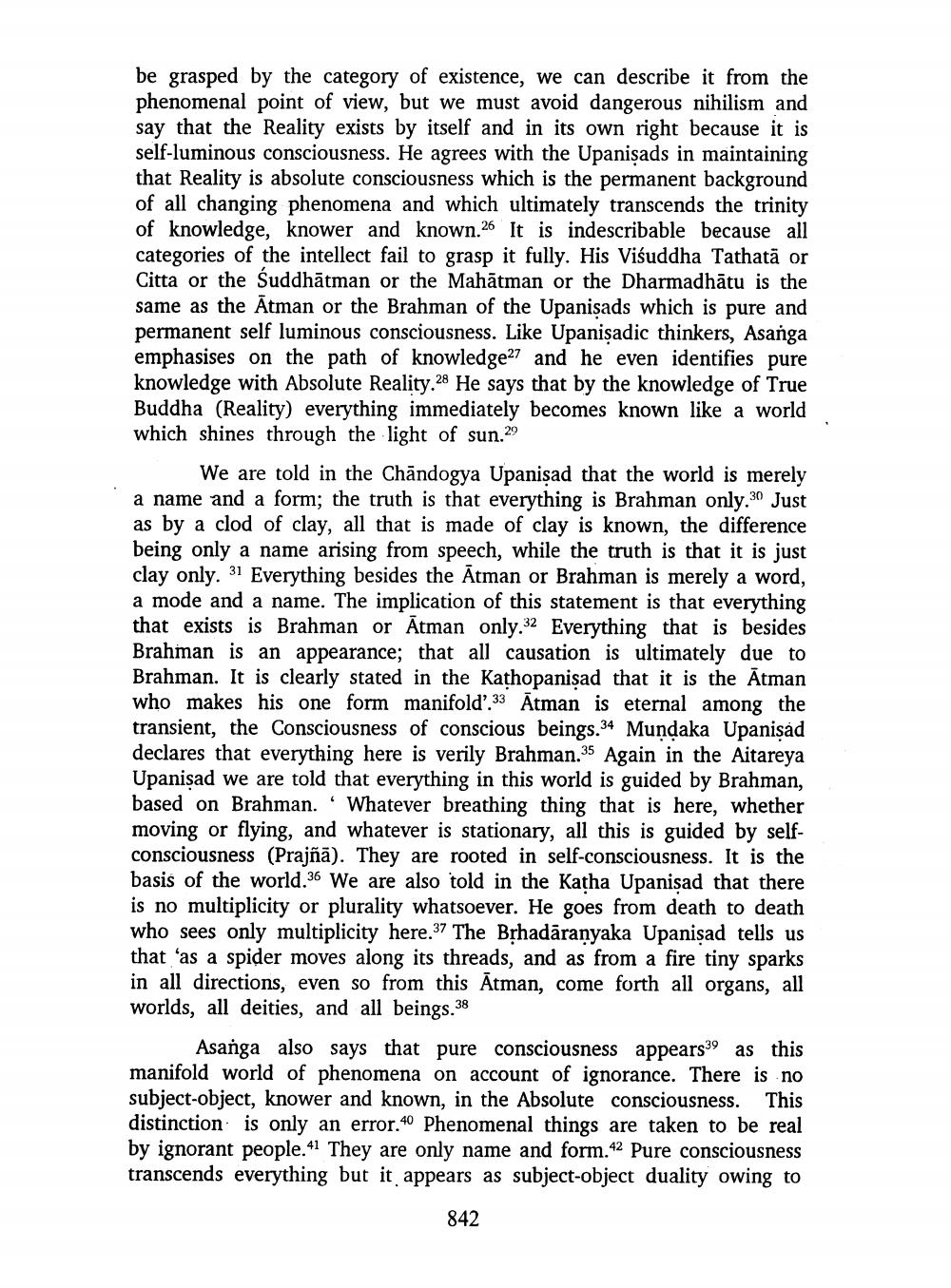________________
be grasped by the category of existence, we can describe it from the phenomenal point of view, but we must avoid dangerous nihilism and say that the Reality exists by itself and in its own right because it is self-luminous consciousness. He agrees with the Upanisads in maintaining that Reality is absolute consciousness which is the permanent background of all changing phenomena and which ultimately transcends the trinity of knowledge, knower and known.26 It is indescribable because all categories of the intellect fail to grasp it fully. His Visuddha Tathatā or Citta or the Suddhātman or the Mahātman or the Dharmadhātu is the same as the Ātman or the Brahman of the Upanisads which is pure and permanent self luminous consciousness. Like Upanişadic thinkers, Asanga emphasises on the path of knowledge27 and he even identifies pure knowledge with Absolute Reality.28 He says that by the knowledge of True Buddha (Reality) everything immediately becomes known like a world which shines through the light of sun.29
We are told in the Chăndogya Upanisad that the world is merely a name and a form; the truth is that everything is Brahman only 30 Just as by a clod of clay, all that is made of clay is known, the difference being only a name arising from speech, while the truth is that it is just clay only. 31 Everything besides the Atman or Brahman is merely a word, a mode and a name. The implication of this statement is that everything that exists is Brahman or Ātman only.32 Everything that is besides Brahman is an appearance; that all causation is ultimately due to Brahman. It is clearly stated in the Kathopanisad that it is the Ātman who makes his one form manifold’.33 Ātman is eternal among the transient, the Consciousness of conscious beings.34 Mundaka Upanisad declares that everything here is verily Brahman.35 Again in the Aitareya Upanişad we are told that everything in this world is guided by Brahman, based on Brahman. Whatever breathing thing that is here, whether moving or flying, and whatever is stationary, all this is guided by selfconsciousness (Prajñā). They are rooted in self-consciousness. It is the basis of the world.36 We are also told in the Katha Upanisad that there is no multiplicity or plurality whatsoever. He goes from death to death who sees only multiplicity here.37 The Brhadāranyaka Upanisad tells us that 'as a spider moves along its threads, and as from a fire tiny sparks in all directions, even so from this Ātman, come forth all organs, all worlds, all deities, and all beings.38
Asanga also says that pure consciousness appears39 as this manifold world of phenomena on account of ignorance. There is no subject-object, knower and known, in the Absolute consciousness. This distinction is only an error.40 Phenomenal things are taken to be real by ignorant people. 41 They are only name and form.42 Pure consciousness transcends everything but it appears as subject-object duality owing to
842




